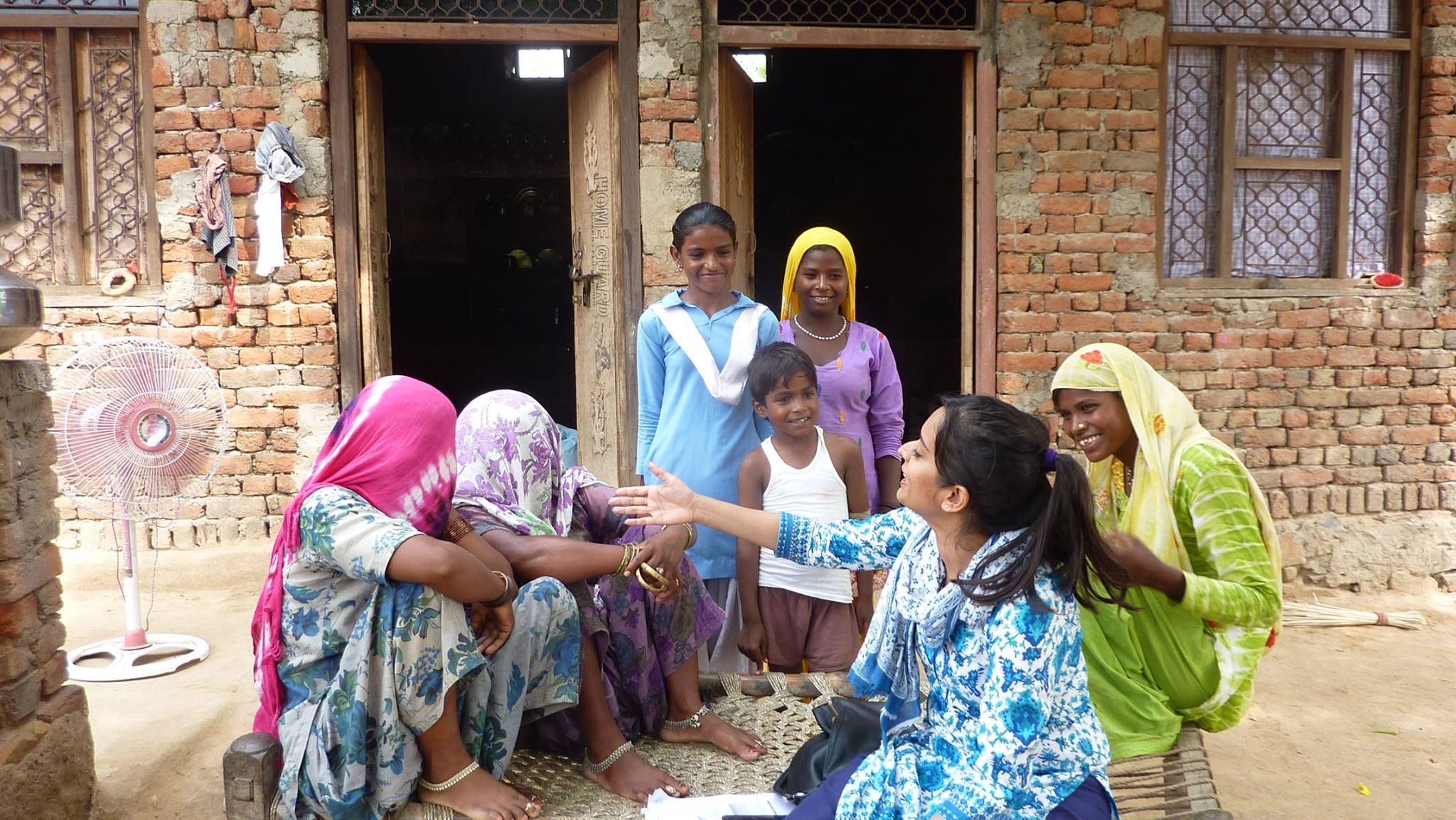Countries across South Asia not only face an unprecedented public health challenge in responding to the spread of COVID-19, but also an impending food and nutrition crisis. Here Deepali Sharma (University of Delhi, India) analyses health data from across the region to explain why the public health crisis is impacting the pre-existing food and malnutrition crisis across the region.
A pandemic of the scale and spread we are currently witnessing with COVID-19 has not been witnessed in recent decades. The COVID-19 health crisis has created havoc across the world, with over 7 million people infected worldwide as of June 7 and more than 403,000 dead – and some countries are still anticipating for a peak to surface in coming days and weeks.
Among the different regions worldwide, South Asia was slow in picking up the infection, a rather puzzling concept, being initially explained by either lack of testing or the strict lockdowns imposed by the South Asian countries. And yet as these countries continue to be stringently lockdowned, they face the tough choice of choosing between lives and livelihoods.
As the days progress and the infections continue to rise, it is becoming clear that this virus will leave long-lasting effects on the economy, society and politics. What is immediately evident is the loss of jobs and incomes, as well as an impending food and nutrition crisis. While COVID-19 is posing new food and nutrition challenges as food supplies are getting choked, it is also exacerbating the pre-existing conditions. While the health crisis is unfolding across all countries, the food crisis it has caused, will have long lasting effects on population. One of the most worrisome effects is that of magnifying South Asia’s malnutrition crisis.
The nutrition crisis in South Asia is extremely alarming. Despite economic growth and a reduction in poverty in recent years, malnutrition remains rampant, and is known within policy circles as the “South Asian Enigma”. A recent research highlights the challenges of the region in achieving the nutrition Sustainable Development Goals. The region has the highest burden of malnutrition in the world with a staggering 33.3% of all moderately or severely stunted children under five years (stunting refers to being too short for one’s age; the height-for-age value to be less than two standard deviations of the WHO Child Growth Standard Median), 15.3% of all moderately or severely wasted children under five years (wasting refers to being underweight for one’s height; the weight-for-height value to be less than two standard deviations of the WHO Child Growth Standard Median) and 3.1 % of all overweight (being overweight refers to weight-for-height greater than 2 standard deviations above WHO Child Growth Standard median) children under five years living in South Asia.
| Stunting | Wasting | Anemia | |||||||
| Country/Year | 2000 | 2015 | Absolute Change | 2000 | 2015 | Absolute Change | 2000 | 2015 | Absolute Change |
| Afghanistan | 53.2 | 40.9 | -12.3 | 12.5 | 9.5 | -3 | 36.6 | 42 | 5.4 |
| Bangladesh | 65.8 | 36.1 | -29.7 | 2.5 | 14.3 | 11.8 | 48.1 | 39.9 | -8.2 |
| Bhutan | 47.7 | 33.6 | -14.1 | 17.1 | 5.9 | -11.2 | 52.3 | 35.6 | -16.7 |
| India | 57.7 | 38.4 | -19.3 | 13.4 | 21 | 7.6 | 53.3 | 51.4 | -1.9 |
| Maldives | 33 | 20.3 | -12.7 | 11.3 | 10.2 | -1.1 | 51 | 42.6 | -8.4 |
| Nepal | 68.2 | 37.4 | -30.8 | 14.2 | 11.3 | -2.9 | 51.5 | 35.1 | -16.4 |
| Pakistan | 42.7 | 45 | 2.3 | 15.5 | 10.5 | -5 | 49 | 52.1 | 3.1 |
| Sri Lanka | 26.1 | 17.3 | -8.8 | 17.5 | 15.1 | -2.4 | 35.1 | 32.6 | -2.5 |
Table 1 Trends in Nutrition Indicators in South Asia, 2000-2015
Table 1 shows the trends in stunting, wasting and anaemia (in women of reproductive age) levels in the eight South Asian countries. While these countries seem to have made progress on some indicators, they seem to be performing poorly on many others. Stunting rates have declined for all the countries except Pakistan, while the decline in rates between 2000 and 2015 was highest for Nepal (30.8%) and Bangladesh (29.7%). However, despite the decline, the levels continued to be high for most of the countries with highest levels in Pakistan (45%), Bangladesh (40.9%), India (38.4%) and Nepal (37.4%), underscoring the daunting task at hand. Wasting figures show similar trends. Another major cause of concern is the high levels of anaemia in women in reproductive age-group, with as many as 40-50% of them being anaemic.
The 65th World Health Assembly (WHA) goals (set in May 2012) emphasise the reduction in five key nutrition indicators by 2025. Building on this, the Sustainable Development Goals (SDG) 2030 Agenda hold nutrition crucial in a multidirectional relationship with many developmental goals, echoed in Target 2.2 of the SDGs, that aims to “End all forms of malnutrition, including achieving by 2025 the internationally agreed targets on stunting and wasting in children under five years of age, and address the nutritional needs of adolescent girls, pregnant and lactating women, and older persons.”
Seen against the background of World WHA goals and the SDGs, most countries in South Asia would currently miss meeting any of these goals. A projection exercise for selected South Asian countries for 2020, 2025 and 2030 for India, Nepal and Bangladesh, based on five-year compound annual growth rate (CAGR) between the year 2010 and 2015, shows that none of the countries are on track to meet any of the nutrition goals and they would miss some of these goals by huge margin.
India will miss all nutrition targets by at least 20 % and the anaemia target by 42.70%; while Nepal would also miss stunting and anemia targets, it would miss wasting targets by only 4%. The only target to be achieved is exclusive breastfeeding for these countries and the most worrisome projection is for anemia in women.
Bangladesh seems to be doing better than India but would be slightly behind Nepal in meeting the targets. In a nutshell, all the South Asian countries would miss targets. The crucial role that India plays in the overall SDGs, given the sheer size of its population, points to the fact that missed nutrition targets in India would have grave implication for worldwide nutrition targets and all other inter-related targets.
The growing menace of anaemia in the region calls for urgent attention. While anaemia is a medical condition that impairs health and well-being in women and increases the risk of maternal and neonatal adverse outcomes, it has underlying social and economic determinants that highlight the role and status of women in a society. The high levels of malnutrition among women in South Asian countries can be ascribed to their secondary status and discrimination at all levels of the society.
Given the COVID health crisis the world is facing, the role of women in the battle against malnutrition assumes even greater importance. In the wake of rising food prices and broken supply chains, the poor, vulnerable, women and children are worst affected. Nearly 1.5 billion children are being kept away from school due to pandemic. Disruption and closure of schools has a negative impact not only on education but also nutrition by negating access to regular school feeding and nutrition services.
Evidence from earlier crisis show that food insecurity may affect women more than men. Women also suffer due to increased violence against them due to economic insecurity and poverty related stress, thereby further weakening their position. All these factors would push achievement of SDGs further into the future. While long run goals can wait; in the short run continuous and healthy food availability is a must for mitigate adverse effects on nutritional status.
This article gives the views of the authors, and not the position of the South Asia @ LSE blog, nor of the London School of Economics. Featured image: A street vendor selling spices on the streets of Bangalore; Credit: Balaji Srinivasan, Unsplash.








Deepa,
Very well written, very informative. Would like to see more articles of your s.
Keep it up 👍
Regards
Kiran Todaria